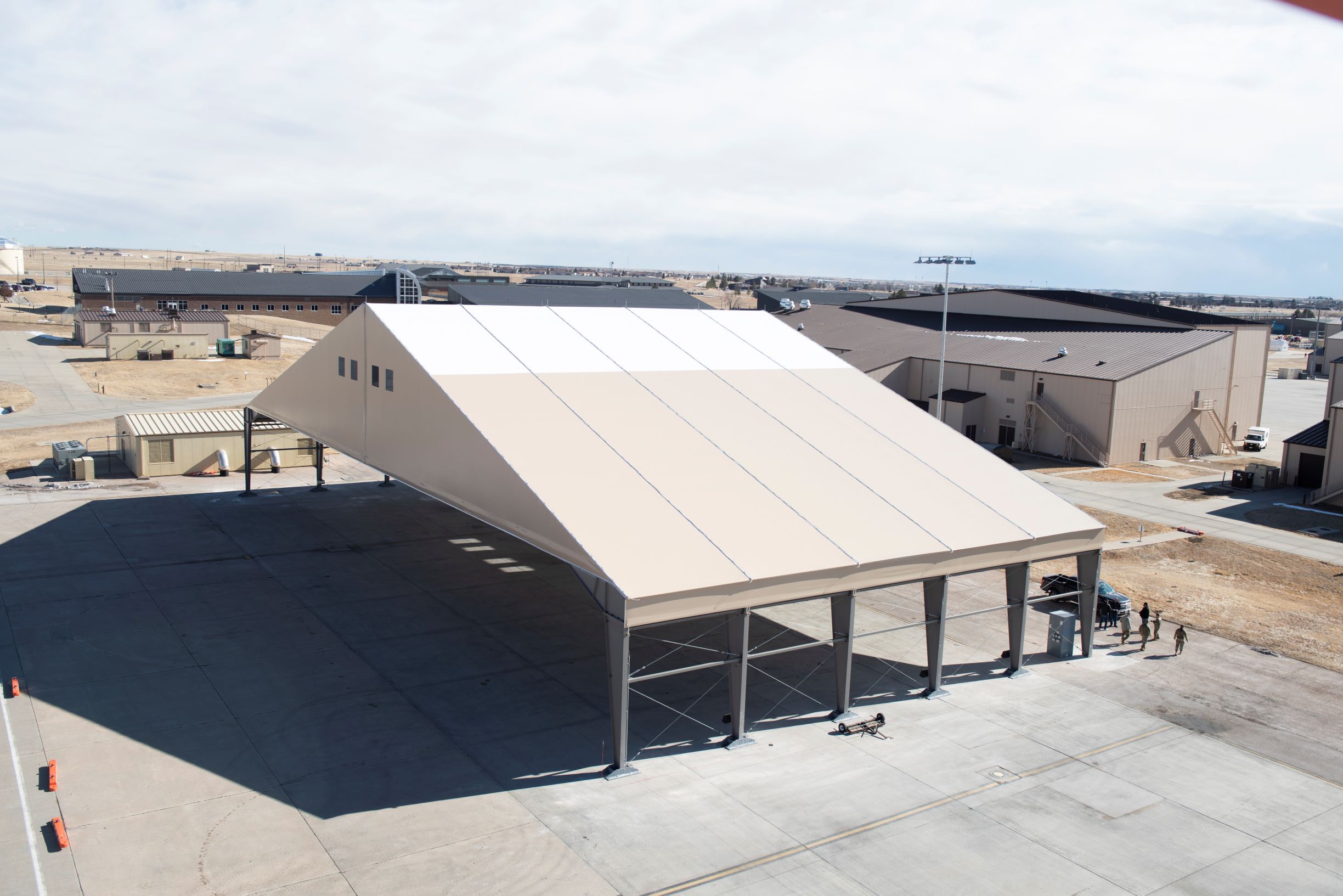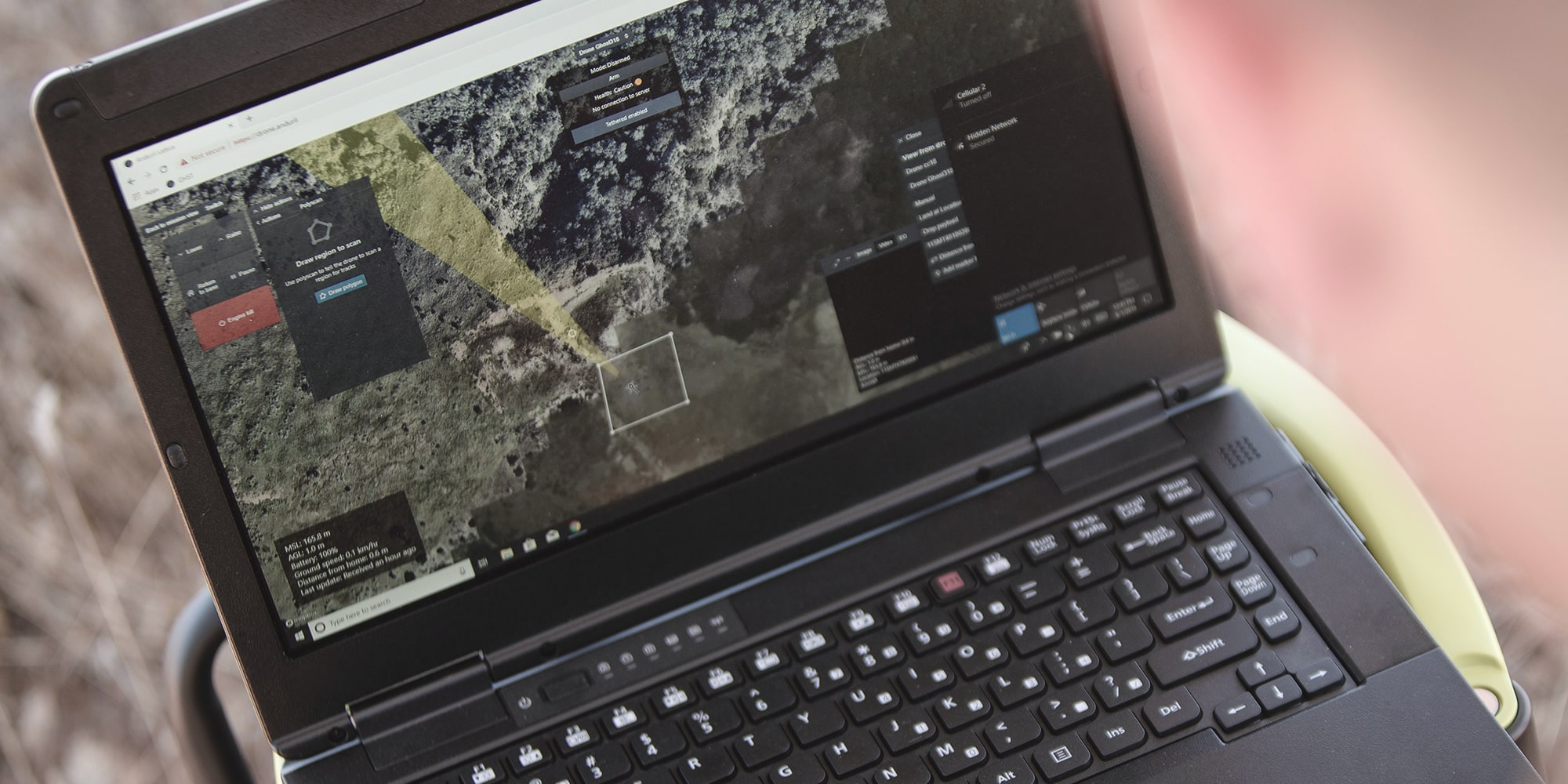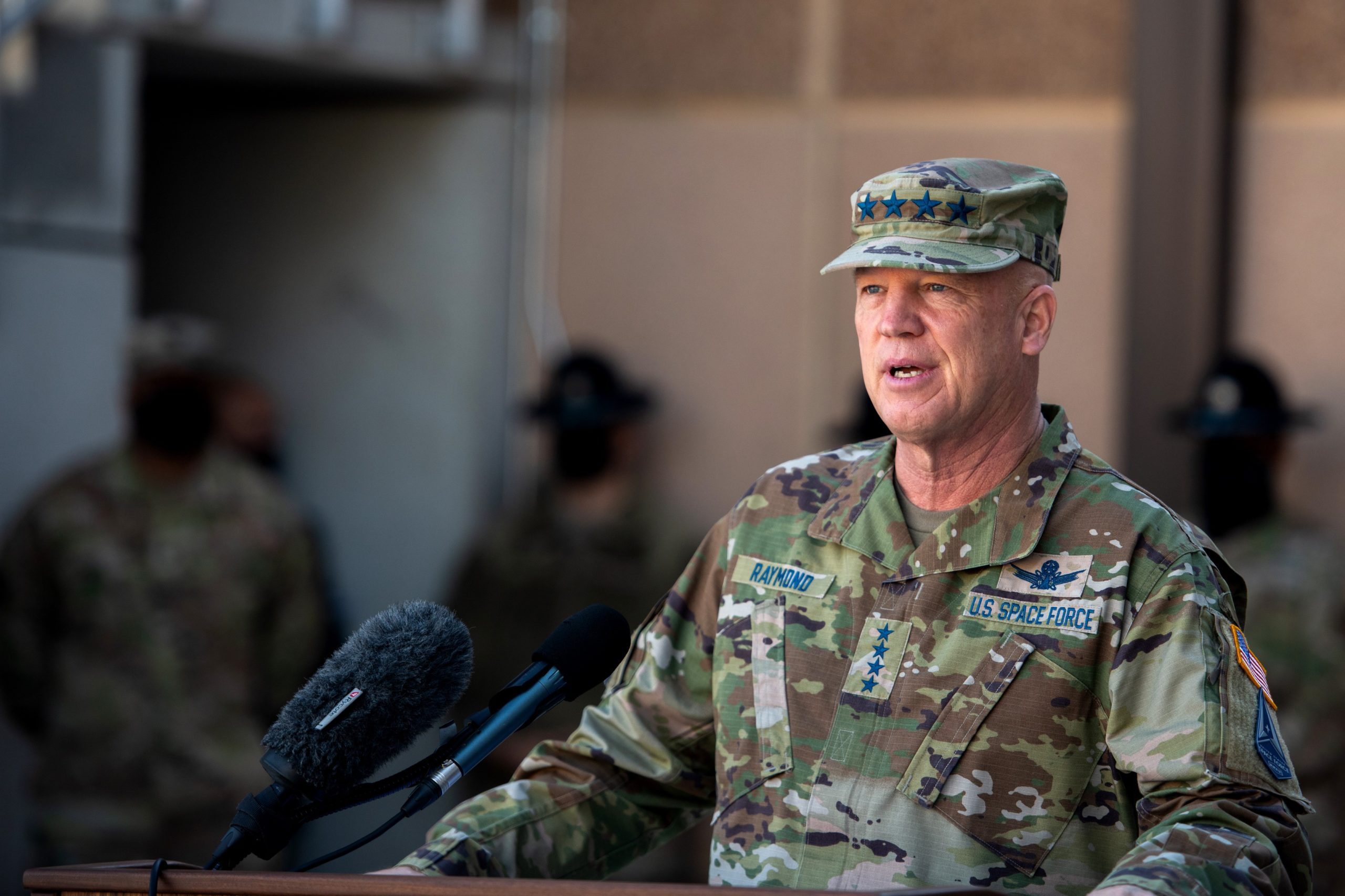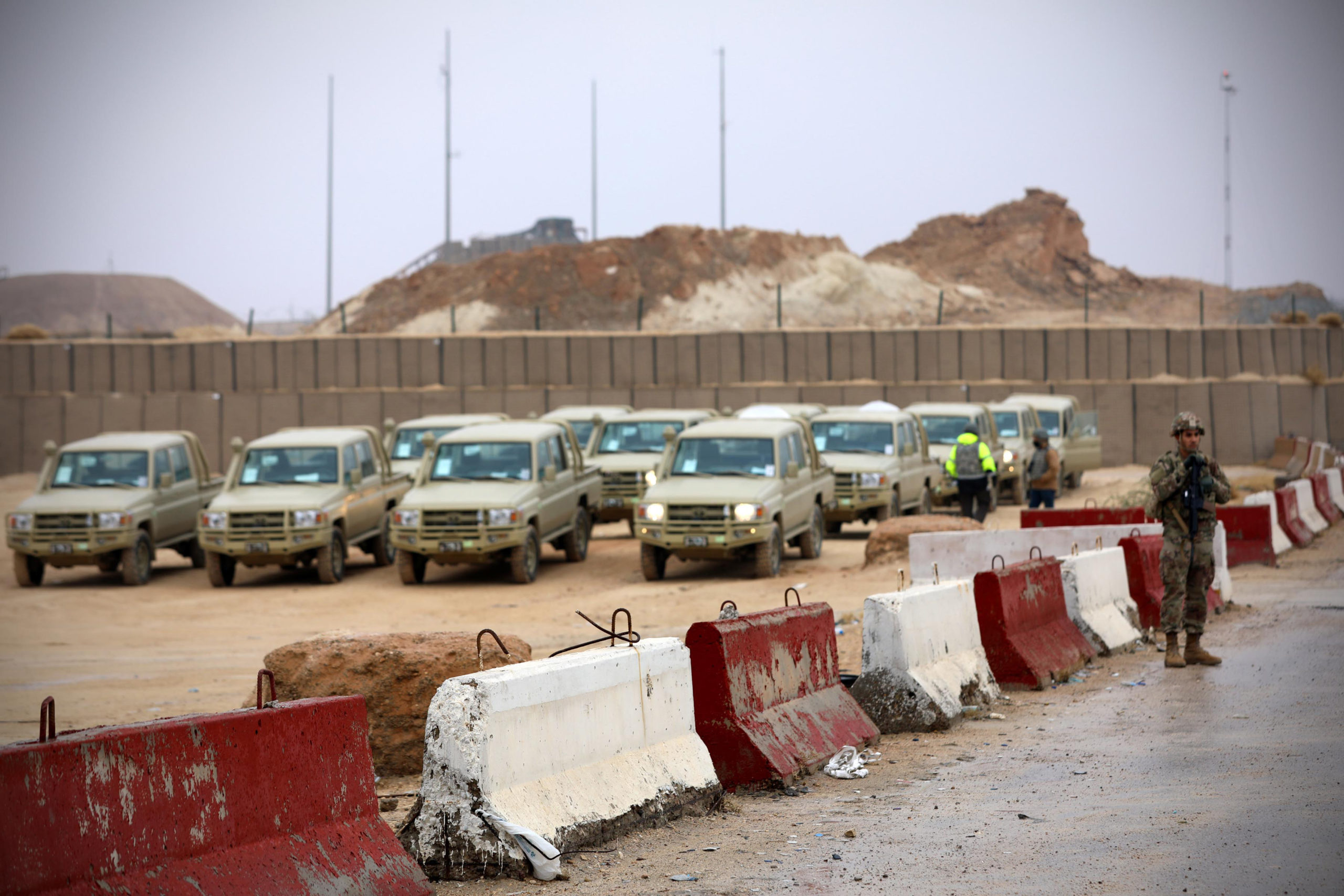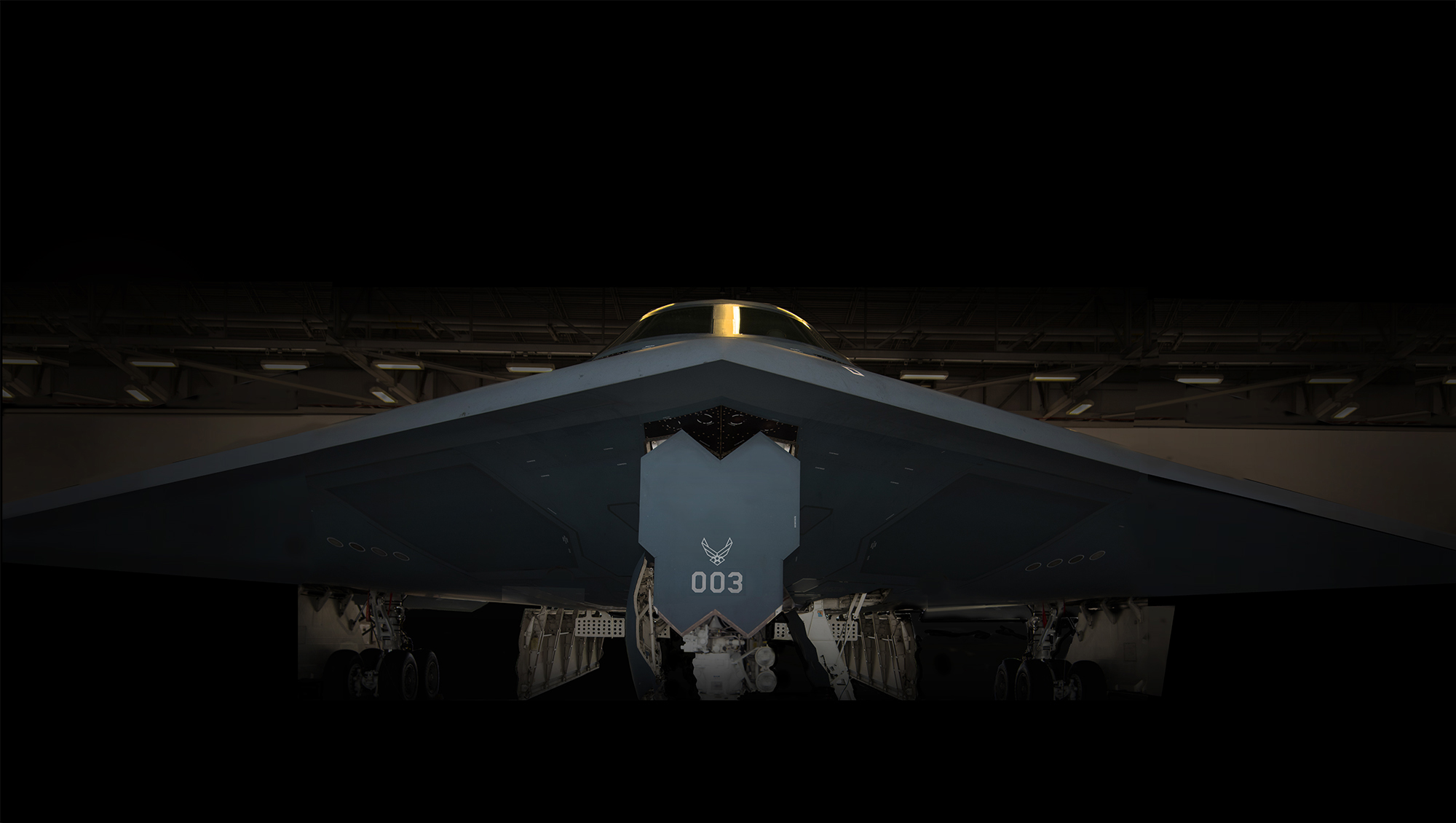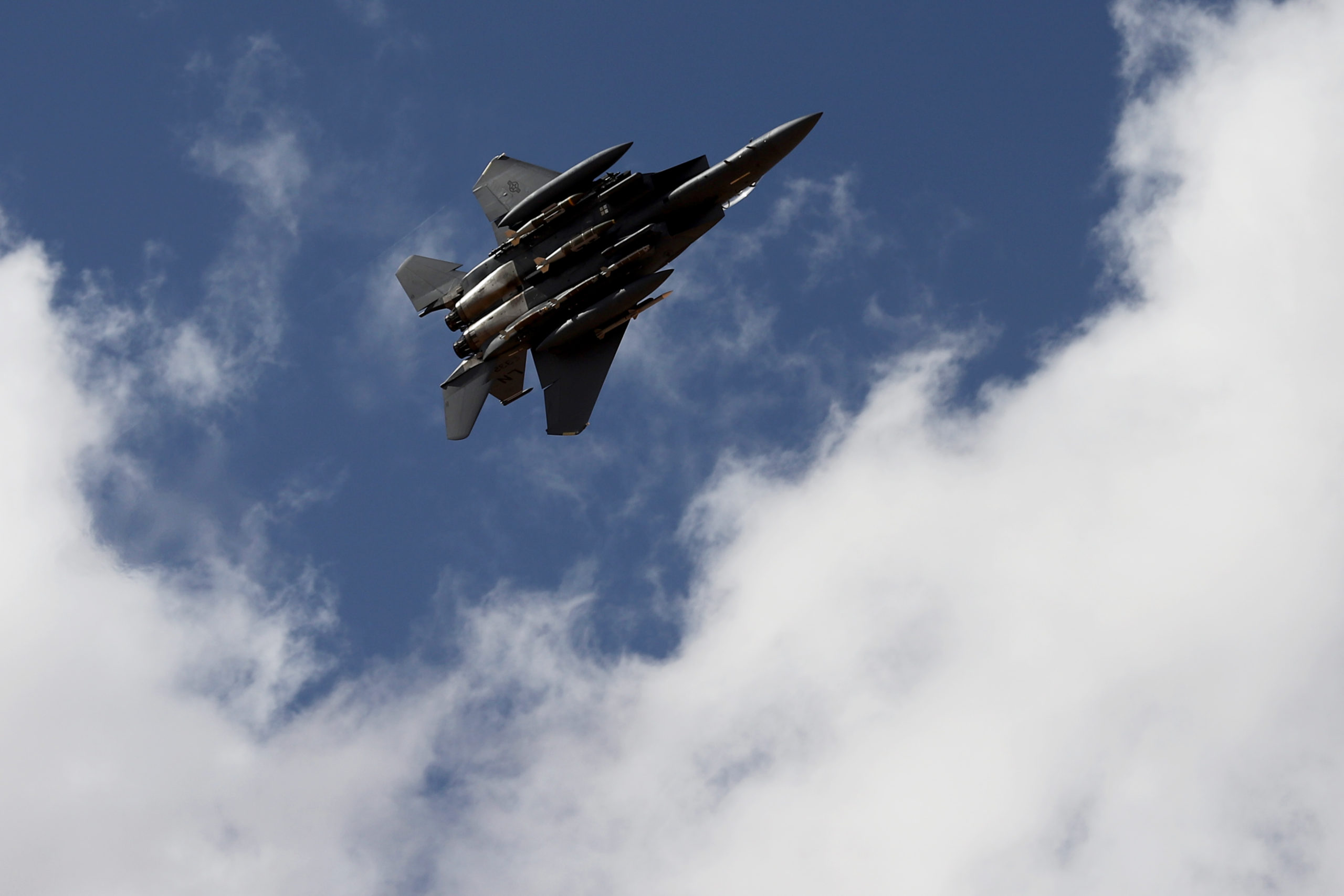Space Force troops are weighing in on which new set of enlisted insignia will grace their arms as they rise through the ranks, via a feedback survey designed to inform the final pick.
Guardians are offering their opinions on four sets of insignia, according to a picture posted to Reddit and verified by the Space Force. It’s the latest step toward crafting a unique culture for the newest branch of the military, created in December 2019.
One option is nearly identical to the Air Force’s chevron patches, but has the service’s delta logo over a globe in place of the Air Force star.
A second option resembles a downward arrow, with the delta and globe in the middle, while a third flips the design into an upward arrow. Those designs resemble aspects of Army, Navy, and Marine Corps insignia.
A fourth design features the stripes, delta, and globe inside a hexagon that grows as the person attains higher ranks.
Those options represent four archetypes of ideas that emerged as the Space Force crowdsourced suggestions, Chief Master Sergeant of the Space Force Roger A. Towberman told Air Force Magazine March 4. No one design that was submitted is included in those categories, but the service tried to combine hundreds of concepts into those four buckets.
Towberman has worn an interim version of the top enlisted insignia since April 2020, which combines the Air Force star with the Space Force logo, flanked by other stars. He recently announced that Guardians would get the chance to weigh in on the new patches in March.
The survey going around is the “first salvo” of insignia ideas, Towberman said, and the Space Force wants to hear what its thousands of members think. The service will gather that feedback and tweak the designs to better reflect what the force wants to see.
“I want people to be part of their own future,” he said, even if the final result doesn’t make everyone happy.
Some people on Reddit compared the curved stripes to orbits, while others criticized the delta and globe as looking too busy. Others are concerned the Space Force will end up with “Air Force 2.0” instead of trying something more outside-the-box.
Towberman, too, often worries about the Space Force’s brand and heritage.
But it shouldn’t matter whether the end result looks like something else that already exists in the military, he said. What matters most is that Guardians make their choice with intention and craft something with meaning to them.
People should see what they want to see in the designs instead of trying to guess what the Space Force means by the various combinations of stripes and symbols, he added. He believes being as open-minded as possible, not prescriptive, will lead Guardians to the right decision.
Various iterations of the insignia will evolve throughout 2021, and the Space Force could announce the winning design by this winter. Towberman said he hopes to attend the service’s second birthday banquet—that milestone comes at the end of December—in the Space Force’s new dress uniform, with fresh insignia attached.
If they don’t make it to that finish line in time, Towberman said, “It’ll bum me out.”


